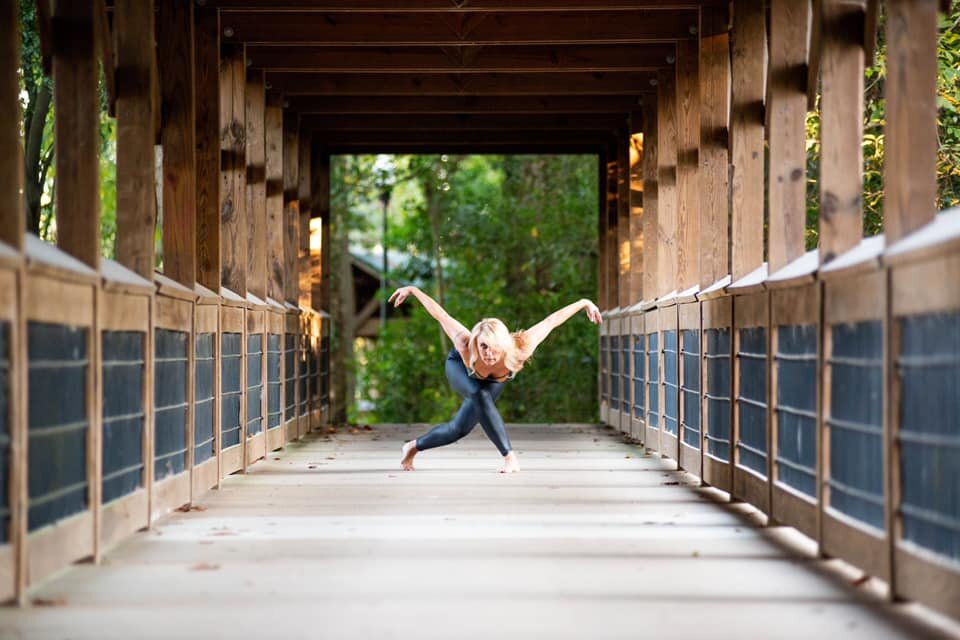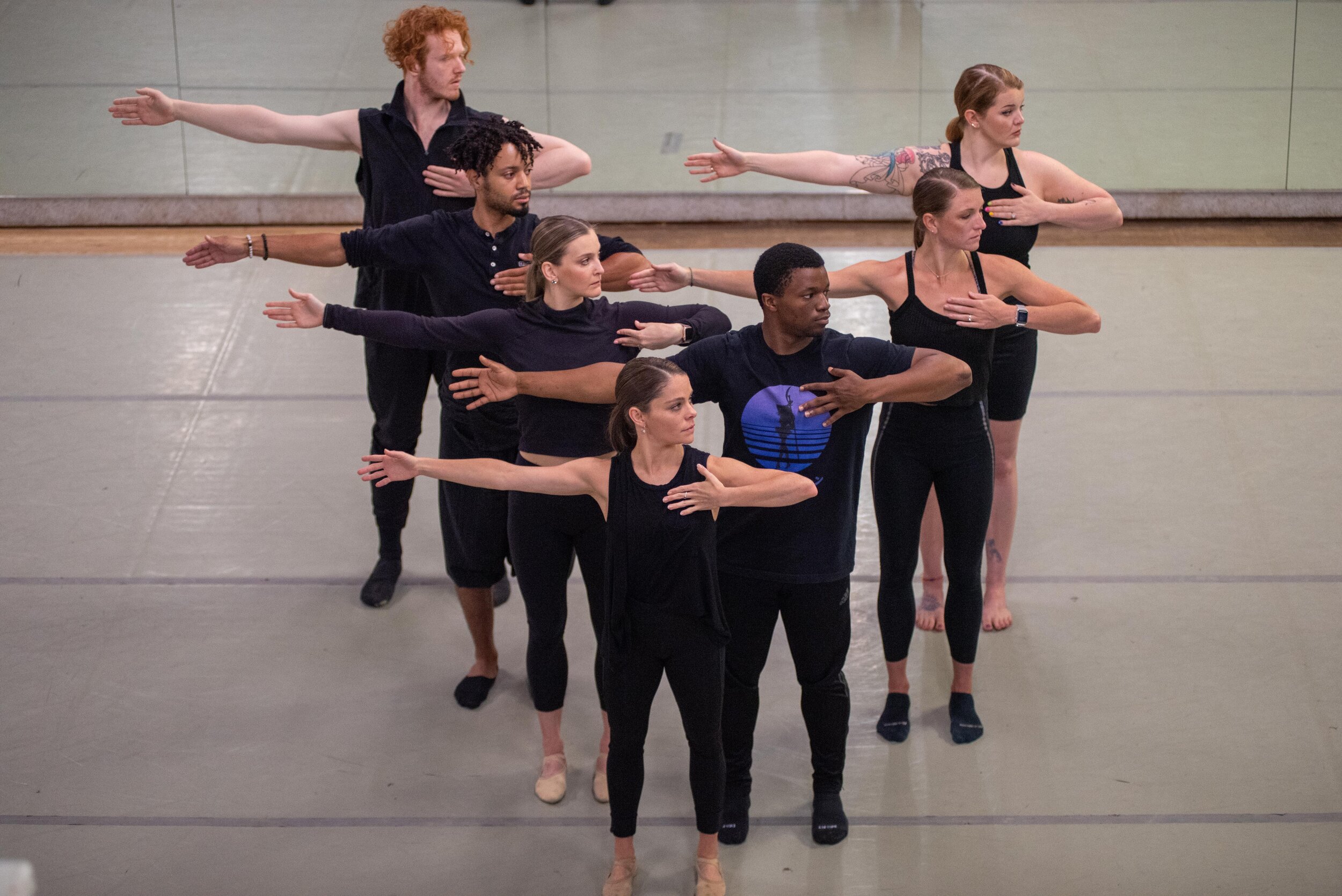On August 1st, Jasper unveiled the newest Tiny Gallery featuring Ashley Bennett, the first solo jewelry show in the gallery’s history. Bennett, a dancer and silversmith who runs dance group Tiny Coven and smithing studio Covenite Silver, created 16 pieces throughout July for the show. The show has one week and two pieces left, so take a peek at them and Bennett’s life below.
Bennett is not a stranger to beautiful art, seeing as she was raised by a “natural singer”—her mother—who was in turn raised by a pianist. A young woman raising a child on her own meant the pair moved quite often, living in Georgia, Ohio, and Michigan. Throughout times of change, though, one thing remained certain.
“My mom wanted me to have more art in my life, and I always had a wild imagination,” Bennett recalls. “In the 6th grade, my English teacher recommended that I be placed in a magnet school for fine arts, based on my creative writing. I ended up being accepted for music, drama, and dance.”
While Bennett enjoyed her courses, she found herself struggling to organize her work, time, and thoughts. Unfortunately, due to time and circumstance, she would not have an answer to understanding this part of her identity for years.
“Thanks to social media and the fact that people understand a lot more about learning and neurodivergence, I'm currently working on getting a diagnosis for adult ADHD and dyslexia,” Bennett divulges, “It's not that I'm excited to have a learning disability—I'm just excited to know that I don't have to feel ashamed of myself for failing at some things.”
Towards the beginning of this journey of self-understanding, Bennett took a couple of different dance classes, including Appalachian style clogging and belly dancing, the latter of which would become a defining part of her identity. While she did not immediately dedicate herself to belly dancing, Bennett did fall in love with yoga, and serendipitously, with a yoga class taught by belly dancer, Rachel Brice.
“My yoga practice was never the same after that,” Bennett shares. “It's now been 16 years since I took my first intensive with Rachel…and only 6 months since we spoke on Zoom about a final project that I completed for her during quarantine.”
This seeking of the self and interweaving of aspects of life continues to leak through Bennett’s art. Belly dancing and jewelry making are her two passions, and as she has explored each, she has found they speak to one another. Belly dancers, for instance, often partake in their own costume and jewelry design.
“One time, when I was brand new and had made my very first ‘bra’ style top, a woman walked up and exclaimed that she owned the exact same embroidered trim that I had used (from JoAnn Fabrics),” Bennett remembers, “After that, I would only buy costume components from vintage and ethnic shops online. I want my audience to be transported to another world, not to the craft store. Keeping everything thing one-of-a-kind, handmade, and rugged is what drew me to smithing.”
Even today, Bennett emphasizes that any jewelry she creates she would also wear as a costume piece. A balance of dedication and spontaneity are present in both smithing and performing. Individually, they function like a yin and yang with dance focusing on community and smithing focusing on solidarity, coming together to inform one another’s storytelling.
“Both disciplines involve a hardy dose of improvisation, which I find deeply gratifying,” Bennett says. “And they both bring me so much joy.”
Whether dance or jewelry, past work or present, Bennett is inspired by the less tangible aspects of the world around her, claiming that she never stopped believing that magic exists naturally within all of us. She hopes to offer a tangible version of that to others, often with pendants inspired by mythical creatures.
“My approach to costuming is that I want the audience to believe we may have been born wearing our costumes. While I am still mastering the basics of silversmithing, my aim is to create pieces that look like the wearer came into this world wearing them,” Bennett says. “It would hang naturally, and the closures would be difficult to spot. I love when you can look at a piece close-up and still not really be able to tell how it was made.”
When it comes to this specific Tiny Gallery show, Bennett was motivated by a desire to make one piece of jewelry every day through the month of July and present a fresh, inspired collection. While 2020 provided much free time to smith, 2021 sucked much that time away, and whatever time remained typically went to custom designs.
“I wanted to challenge myself not to overthink every piece, to just make something from start to finish in one day, and then build the collection one day at a time and see what happens,” Bennett reveals, “July is also my birthday month, so I saw it as an indulgent treat for myself. No customs—just a few hours of improvisation a day and a fistful of pendants made from my favorite stone.”
Unfortunately, at the end of June, Bennett’s mother fell ill, and she found out she had to vacate her home in 30 days, moving not only her studio but her family and life. July brought not only these shifts but a hernia and broken tooth. Despite these curveballs directly thrown her way, Bennett still made 16 pieces of jewelry throughout the month of July.
“I hope that those who see my work get a sense of dauntless optimism. Things will work out, and if they don't, something else will happen,” Bennett says. “I am not a Buddhist, but I am comfortably detached from outcomes—and I think that is the secret to happiness.”
Attached to an outcome or not, the results of her show so far are nothing short of wonderful, though not surprising. 14 of 16 pendants have sold, pendants proving that a handmade piece of jewelry holds just as much soul and story as a painting or photograph. The varied tones of the center stones on each piece, shining in emerald and cerulean, hold and project individual tales.
As a storyteller and artist, Bennett has two opportunities she considers distinctly special. One is interacting with her dance students—who she calls her closest friends and support system—and the other is being a working artist and a mom: “It is a huge privilege to me that I get to raise my daughter in a community of diverse and talented people, like those from our years at Tapp's Arts Center and presently at Sage Studios.”
If you’d like to support Bennett as an artist, teacher, mother, and human, visit her gallery by the end of the month. Currently, only two of her effervescent pendants remain with only a week left to bring their stories home with you. The gallery is available 24/7 at the Jasper website:
https://the-jasper-project.square.site/tiny-gallery
After the show, Bennett’s dance company, Tiny Coven, will be working towards ensemble performances this coming fall and spring. She hopes to schedule more collection releases with Covenite Silver in the coming months as well, which you can follow on her Instagram @covenitesilver. Finally, she’d love the chance to show old and new friends alike around her new space at Sage Studios.
-Christina Xan






























